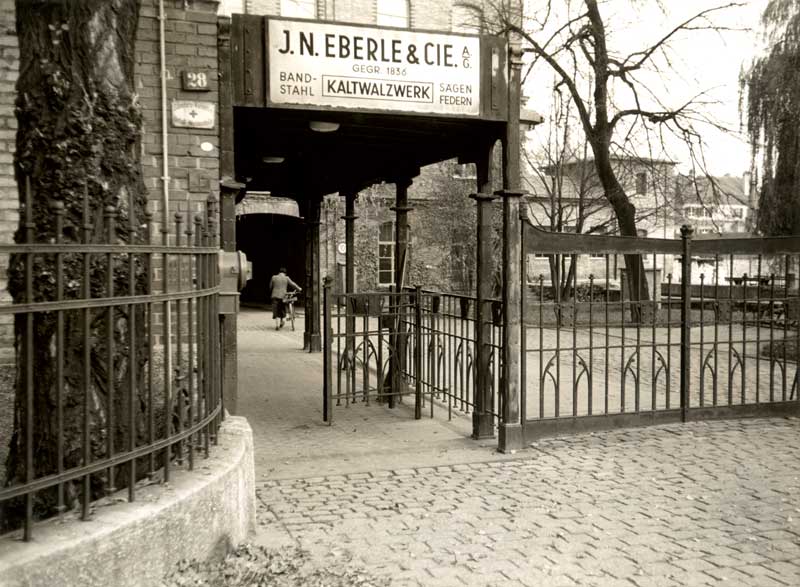
Quality steel products – since 1836
A basis for the future: innovations and investments
In 2004, Eberle created new capacity for metal band saw production with a hall extension. New bell-furnace annealing systems in 2006 enabled higher quality and cost-effectiveness in strip steel production. In 2007, Eberle introduced its own surface inspection system for finishing strip steel products. In 2010, Eberle acquired MHPS Handschuh GmbH & Co. KG, expanding its production of carbide band saw blades. An additional laser welding system increased capacity in 2013. Finally, in 2014, the company modernized its IT-supported business processes with a new ERP system.
The Greiffenberger era
In 1981, Heinz Greiffenberger bought the remaining part of Eberle from SKF and quickly returned the company to profitability. He invested in modern facilities and opened up new export markets. By 1986, despite efficient, machine-based production, Eberle boasted an impressive 340 employees.
Successes with SKF
After the Second World War, it took years to get the destroyed factory back up and running. Production finally resumed only in 1948. In 1954, SKF incorporated the family business into the Swedish group. With SKF, exports increased, and Eberle built a new hall for steel production. When the company outsourced spring production to Schwabmünchen in 1970 due to lack of space, Eberle suffered a simultaneous decline. The spring production division was sold by SKF in 1981.
Times of crisis with recovery
During the crisis-ridden period between the World Wars, Eberle was able to expand to 1,000 employees. It held a virtual monopoly on pocket watch springs in Germany. By its centenary in 1936, the company enjoyed flourishing exports and an excellent global reputation.
Years of growth
In 1871, 140 workers at Eberle generated sales of 50,000 Reichsmarks. The company now had its own file-cutting shop and built a new building with a model carpentry shop. In the same year, Eberle introduced a voluntary employee benefit fund. Eberle still offers an in-house pension plan today. In 1883, experiments with cold rolling were conducted, and two years later, its own cold rolling mill went into operation. Also in 1885, the company acquired a mill in Pfersee to utilize the hydropower and built a second rolling mill there. This plant employed 300 people.
Early Years: The Fretsaw Factory
Norbert Eberle founded his fretsaw factory in Augsburg in 1836. Ten years later, he already employed 10 workers who produced 60,000 dozen fretsaws annually.
